
The Forgotten Air Barrirer
Drive by virtually any new home development, and you will notice the homes have a building fabric wrap or OSB sheathing (coated with a green weather barrier product) in conjunction with taped seams. These products, depending on the specific brand, may serve multiple functions for the home. Typically they act as an air barrier, limiting air leakage, and in some cases, a weather barrier, protecting the wall sheathing from exterior water penetrating the exterior claddings. The focus of this discussion is the air barrier, which limits air leakage into and out of the home, both through the partition walls and ceiling/floor assemblies separating the garage from the living space.
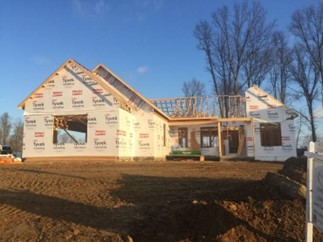
Image courtesy of Building America Solution Center
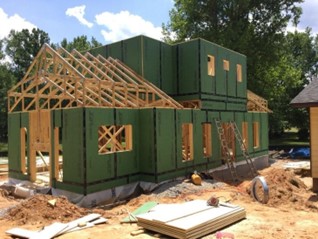
Image courtesy of Building America Solution Center/Imery & Company
The 2015 IRC in Chapter 11- Energy, includes section N1102.4 (IECC R402.4) Air Leakage (Mandatory), which opens with: “The building thermal envelope shall be constructed to limit air leakage in accordance with the requirements of Sections N1102.4.1 through N1102.4.5.” These sections identify compliance criteria including envelope sealing, inspections, testing, limits on fireplaces, window leakage, combustion air opens, and lighting fixtures penetrating the thermal envelope. Buildersregularly focus on sealing the envelope on the structure’s exterior as represented in the two photos above. However, they often fail to consider the walls and floor systems adjacent to and above the garage, separating the conditioned living space from unconditioned garage spaces.
An air barrier for this space is much more than a simple energy efficiency issue. It is also a health and life safety concern, because potentially hazardous materials such as gasoline, yard chemicals, paints, yard equipment are often stored in garages, in addition to vehicles. Internal combustion engines produce carbon monoxide any time they are operated and contribute to indoor air pollution especially when operated in a confined space. Every year deaths occur as vehicles, barbeque grills, and generators are operated in garages with doors partially or even fully opened.
Using thehome in this photo as an example, notice there is a bedroom on the left extending over a portion of the garage.
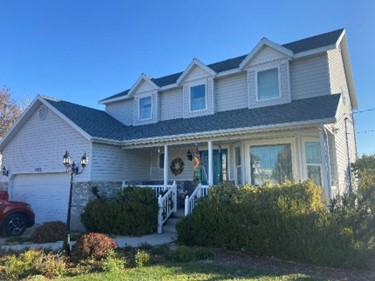
Uncredited
Please consider:
-
-
- The floor joists are continuous from a beam across the middle of the garage, running back across the main floor family room ceiling to the back of the home, below a bathroom and upper back bedroom.
- The floor joists might be blocked at the bearing point or back garage wall; however, we know with I-joists, there will be a rarely blocked one-inch space on either side of the blocking.
- Electrical lighting and switch boxes penetrate the garage drywall ceiling and walls.
- Numerous small holes for wiring and plumbing penetrate the floor sheathing creating potential leaks between the floor joist cavities and the interior walls above.
- The bathtub above most certainly has a large hole in the floor sheathing where the drain and overflow are connected to the building drain waste and vent system (DWV).
- There are four bath fans, one operating continuously for mechanical ventilation, and a range hood vented to the outside. The house runs under slightly negative pressure all the time, ‘leaking’ air in, and replacing exhausted air with fresh, clean outside ventilation air.
-
If there is no complete air barrier separating the garage from home, a portion of the ventilation air will undoubtedly come from the garage.
This is not a complex problem to overcome, it simply requires a little thought and planning. Installing the air barrier as the home is framed is preferable because it is extremely difficult to fix in an existing home. The following photos found on the Building America Solution Center, a resource available to all and produced under the direction of the U.S. Department of Energy’s Building Technologies Office, identify several of these issues and suggested solutions. See here.
What to Look For:
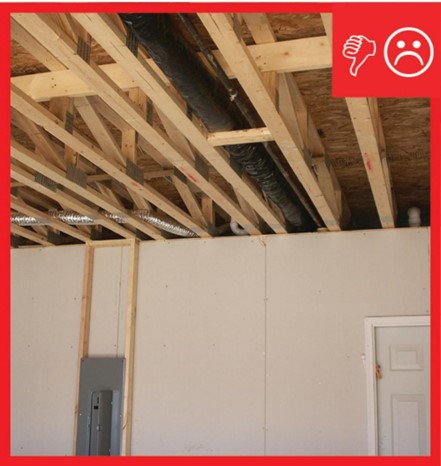
Uncredited
This design will require continuous blocking on top of the garage wall, sealing around the trusses, two flex ducts, gas line, and any plumbing or wiring penetrating the blocking. Creating an effective air barrier in this case will be extremely difficult and most likely unsuccessful. Consider all the complications created when the wire for the entire home is ran off the electrical panel up the wall, into the floor joist, and out to every electrical device and fixture.
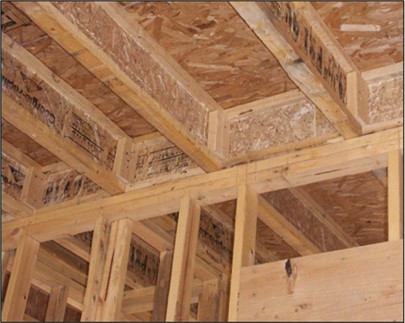
Uncredited
This design with I-joists tightly blocked during framing allows for correctly sized holes drilled for plumbing, mechanical, electrical penetrations. Foam or caulk products may be used to seal penetrations, seams, and small holes.
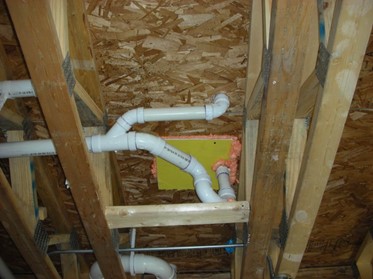
Uncredited
This is an excellent example of sealing at the tub drain connection with fiberglass mat sheathing and spray foam. Note the annular space between the smaller white plumbing vent pipe and the floor sheathing should also include foam sealant.
Other forgotten air barriers typically include cantilever floors at bay windows and other overhangs, drop ceilings, chases open to attics, and attic access openings. Everyone involved in the design, construction, inspecting, and testing of homes should be aware and remember the importance of correctly installing air barriers.
– Dr. Energy

0 Comments